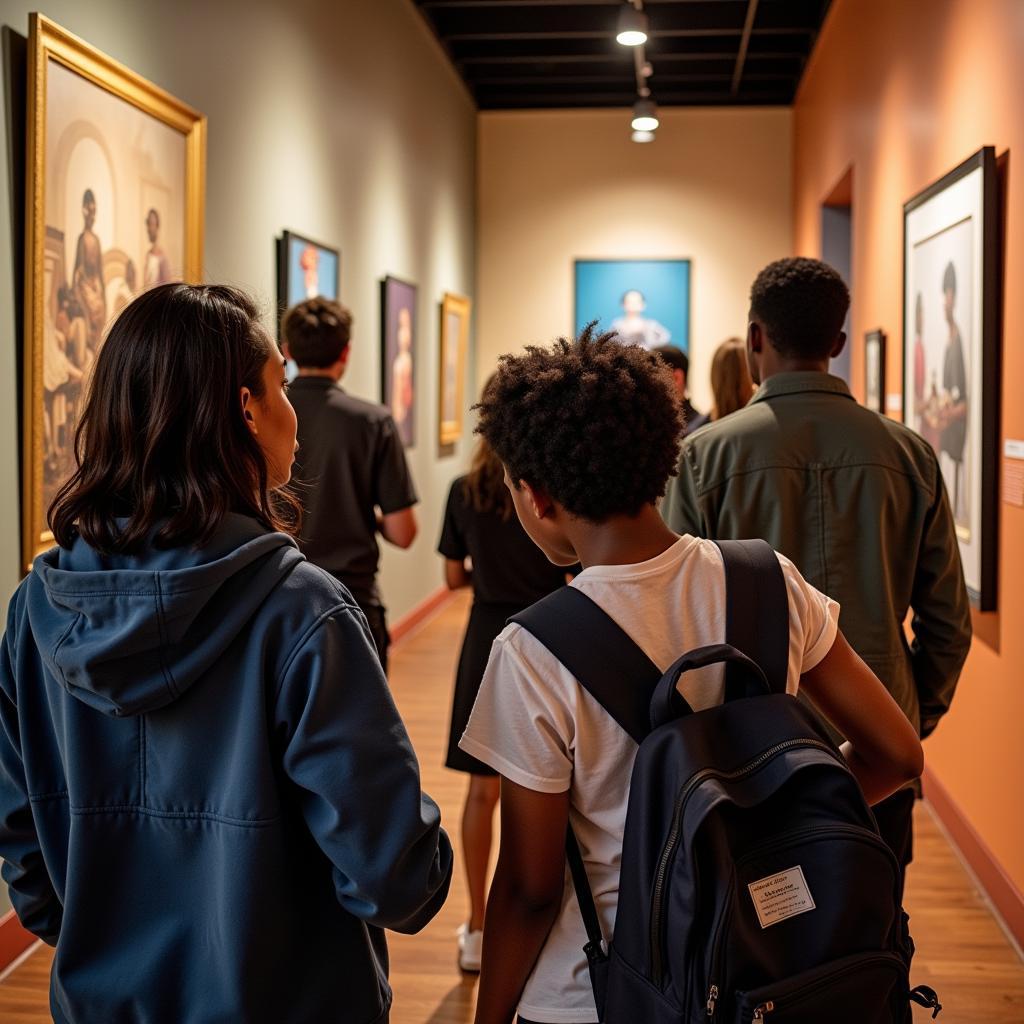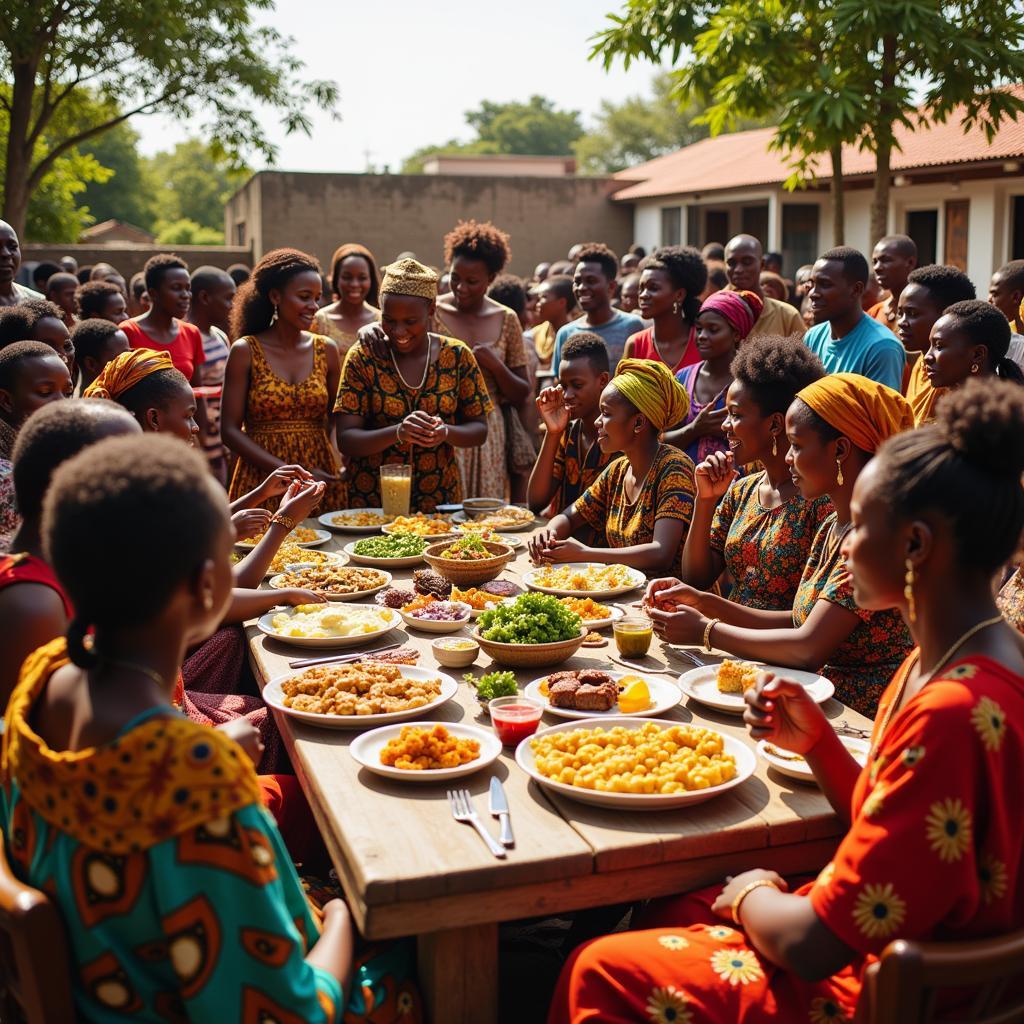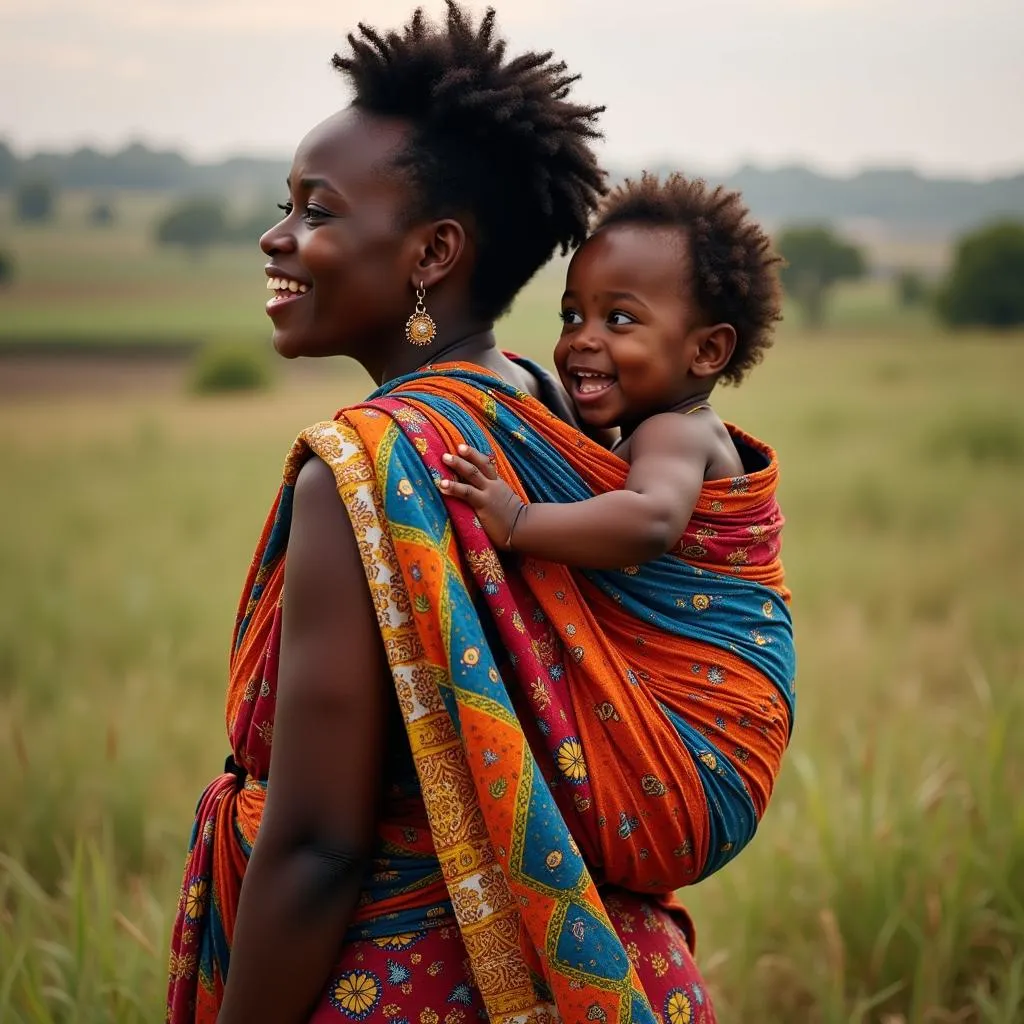African Dressing for Women in Villages
African Dressing For Women In Villages is a vibrant tapestry woven from cultural heritage, practicality, and regional aesthetics. From the colorful kente cloth of Ghana to the intricate beadwork of the Maasai, each garment tells a story and reflects the wearer’s identity within her community. Let’s delve into the fascinating world of traditional African attire for women in rural areas, exploring its diverse forms, meanings, and the stories behind the seams.
The Significance of Traditional Garments
In many African villages, clothing goes beyond mere functionality. It serves as a powerful symbol of:
- Cultural Identity: Clothing often identifies a woman’s tribe, ethnic group, or social standing within the community. Specific patterns, colors, or embellishments can instantly communicate this information.
- Marital Status: A woman’s attire might subtly (or not so subtly!) signal whether she is single, married, or widowed, conveying important social cues within the community.
- Age and Respect: Different styles are often worn by younger and older women, reflecting societal norms and showing respect for elders.
- Spiritual Beliefs: Certain colors, fabrics, or symbols incorporated into clothing can hold spiritual significance, acting as a form of protection or a connection to ancestral spirits.
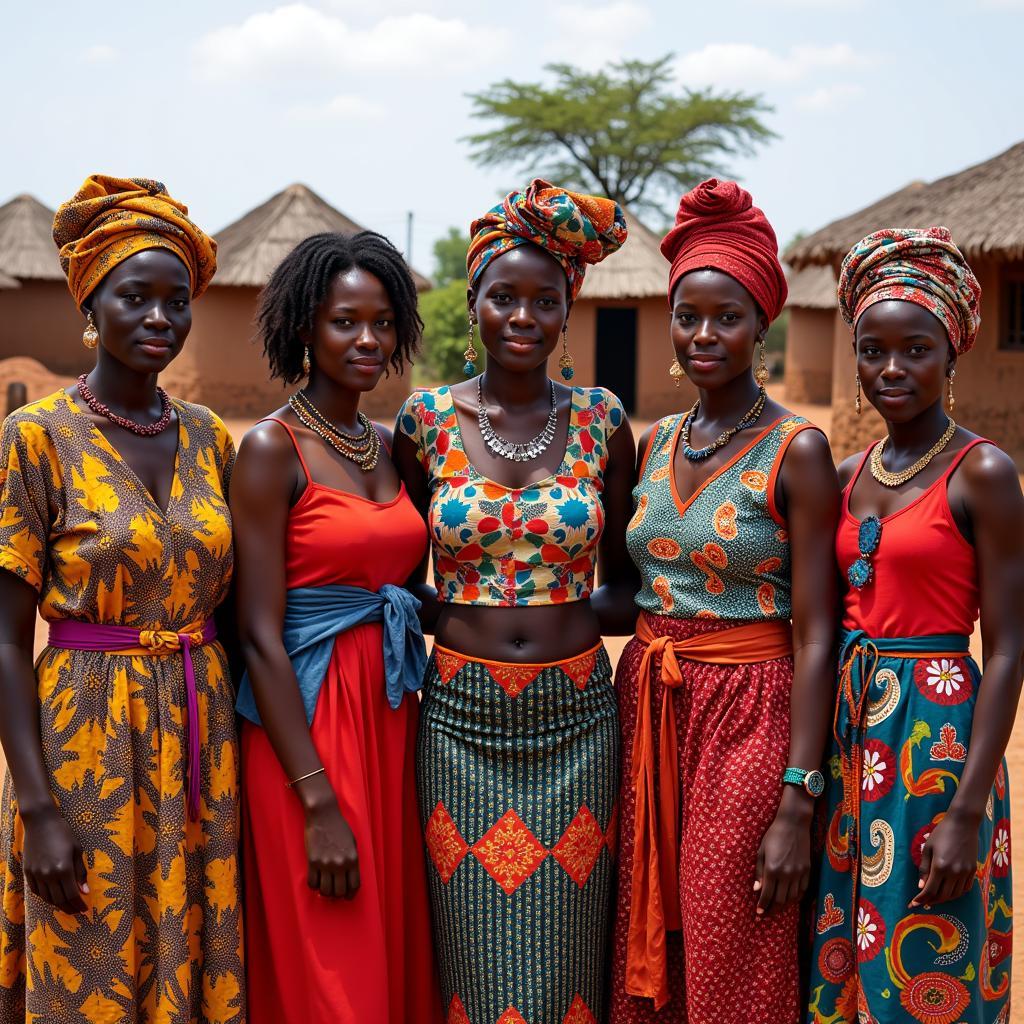 Women in West Africa Wearing Colorful Traditional Clothing
Women in West Africa Wearing Colorful Traditional Clothing
A Continent of Diversity: Regional Styles
Africa’s vastness translates to a stunning array of traditional clothing styles. Here are a few captivating examples:
- West Africa: Known for its vibrant colors and bold patterns. The iconic kente cloth of Ghana, woven on narrow looms, features intricate geometric designs. In Nigeria, the Yoruba people are known for their flowing iro and buba (wrapper and blouse) ensembles often made from brightly colored fabrics like Ankara.
- East Africa: The Maasai women of Kenya and Tanzania are recognized for their striking beadwork. They adorn themselves with elaborate necklaces, earrings, and headdresses, each piece carrying symbolic meaning. The kanga, a rectangular cloth with a printed proverb, is a popular garment in this region, often worn wrapped as a skirt or shawl.
- Southern Africa: Here, you’ll find a mix of influences, from the colorful printed fabrics of Mozambique to the intricate beadwork of the Ndebele people of South Africa.
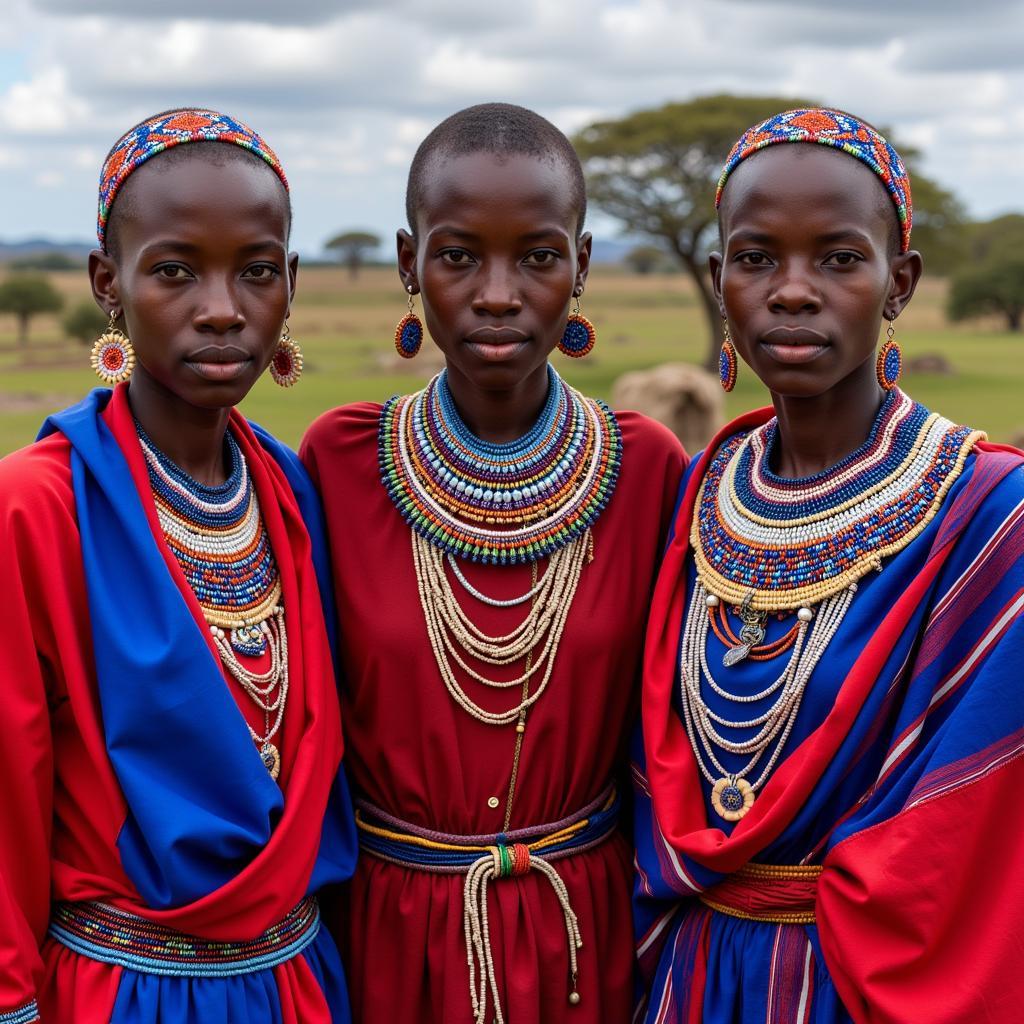 Maasai Women in Traditional Dress and Beadwork
Maasai Women in Traditional Dress and Beadwork
Materials and Making: From Handwoven Fabrics to Natural Dyes
Traditional African clothing is often crafted from locally sourced materials, highlighting a deep connection to the land:
- Cotton: A widely used fabric, prized for its breathability in hot climates.
- Barkcloth: Made from the bark of certain trees, this unique material is often used in ceremonial garments.
- Leather: Treated and crafted into clothing, shoes, and accessories, particularly by pastoralist communities.
- Natural Dyes: Plants, roots, and insects provide an array of colors, from rich indigos to warm earthy tones.
The creation of these garments is often a labor of love, involving skills passed down through generations.
African Dress in a Changing World: Tradition Meets Modernity
While traditional attire remains significant, the influence of globalization and modernization is undeniable. In many villages, women are adapting their clothing, incorporating contemporary styles and fabrics. This fusion has led to exciting new trends:
- Modern Cuts: Traditional fabrics like Ankara are being used to create dresses, skirts, and blouses with more modern silhouettes.
- Mix-and-Match: Women are blending traditional elements, like headwraps or jewelry, with Western clothing.
- Sustainable Fashion: There’s a growing movement to support local artisans and preserve traditional textile techniques.
Conclusion
African dressing for women in villages is a captivating blend of tradition, artistry, and practicality. Each garment tells a story, reflecting cultural heritage, social norms, and individual expression. As the world evolves, so too does the landscape of African fashion, with a new generation blending heritage with contemporary style. By understanding and appreciating the rich tapestry of African dress, we gain a deeper appreciation for the diverse cultures and creative spirit of this vast continent.
